Q&A with Wolf Expert Rick McIntyre
The Call of the Wild
Rick McIntyre arrived at Yellowstone National Park in 1974, just a few years after the nation’s first national park celebrated its centennial. He’s held several titles since then, but none have been more satisfying than the one he enjoyed for well over a decade: biological technician for the Yellowstone Wolf Project.
In the role he came to know the park’s wolf packs by studying them daily. Even better, he was able to share this knowledge with visitors from around the world: about their history at Yellowstone, what their supernatural howling means, where you might see them, and how guests can best appreciate what he calls “a peak life experience.”
Here, McIntyre shares his insights and surprising observations about these communal animals.
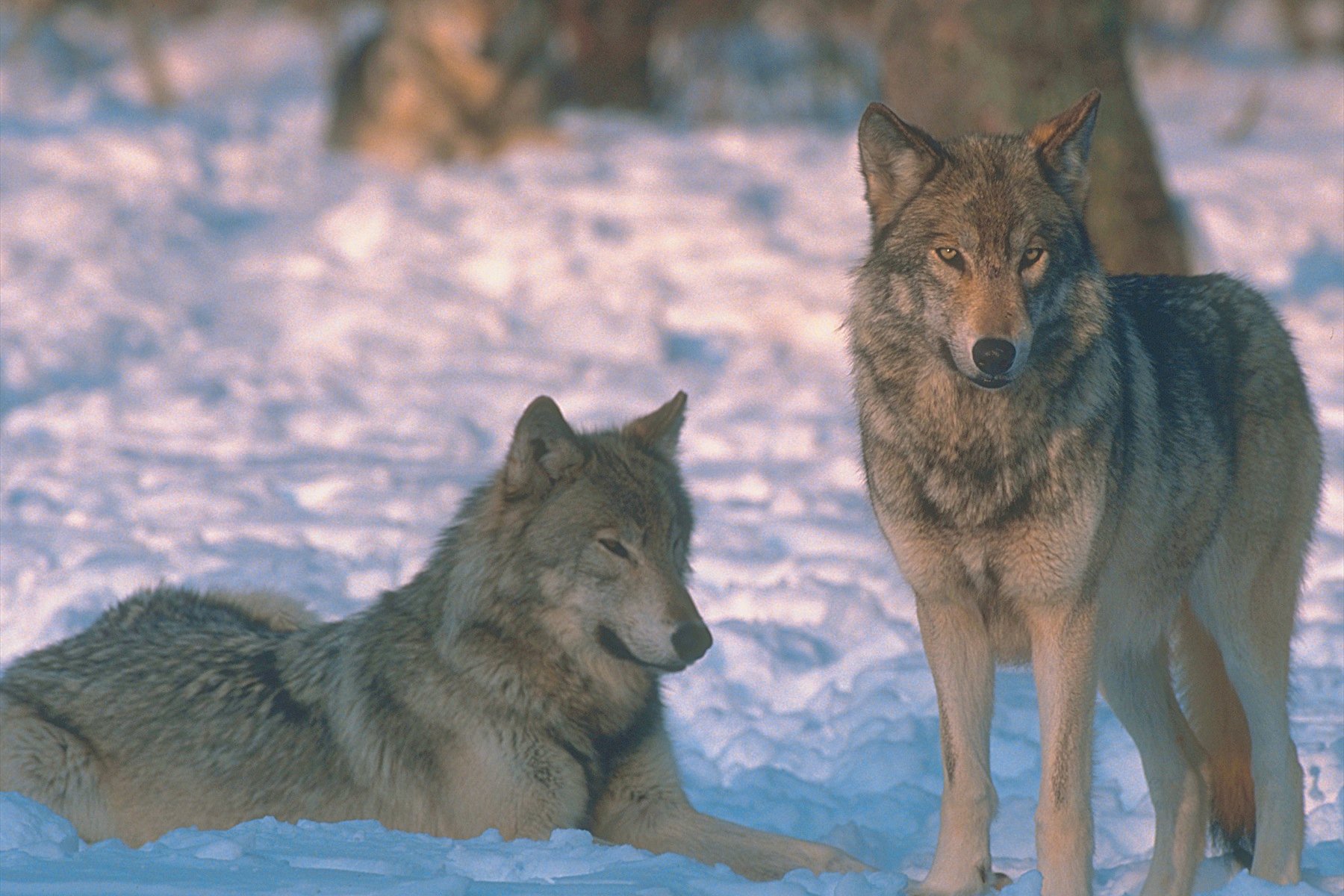
Q: Wolves were re-introduced to Yellowstone in 1995. What was their story before then?
A: When Yellowstone was set aside as the first national park in 1872, the gray wolf was a native animal here. But in the late 1800s and early 1900s, the early rangers thought wolves were no good and they began killing them until they finished the job in 1926.
As an agency it took us a long time, 69 years, to realize what a big mistake we had made in taking out a native species and they were re-introduced to the park in 1995. From historic records we figured out that in the old days there were probably about 100 wolves from 10 packs in an area about half the size of Massachusetts. Over the past five years their numbers average about 96, about the same as it was originally, which is what we want.
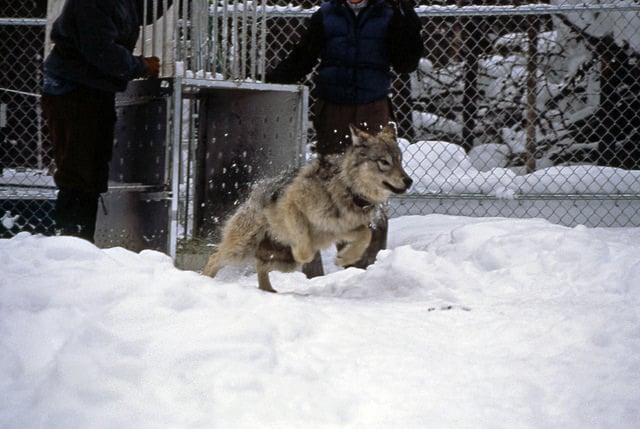
Q: How long have you been observing the wolves?
A: I’ve been at it for the past 15 years without a day off. It’s like the type of good human parent who never wants to miss anything their kids do. They go to every game, every recital, every play — and they do it for the absolute best motives. I’ll never have anything like this happen again in my life. Right now I am in the middle of this great unfolding story and I don’t want to miss a thing.
Q: Where are the best places visitors can see wolves?
A: One issue is the time of year. In the summer and fall when all of the park roads are open, the majority of sightings will be in the northern range on the road straight east from Mammoth, which is paved for about 48 miles. You’ll go through high-quality elk habitat, which means it’s also a good place for wolves. Also, in Hayden Valley between the canyon and the lake area, the Wapiti Lake Pack tends to be very visible.
In the winter, it’s different. You’d have to join a tour to reach the interior.
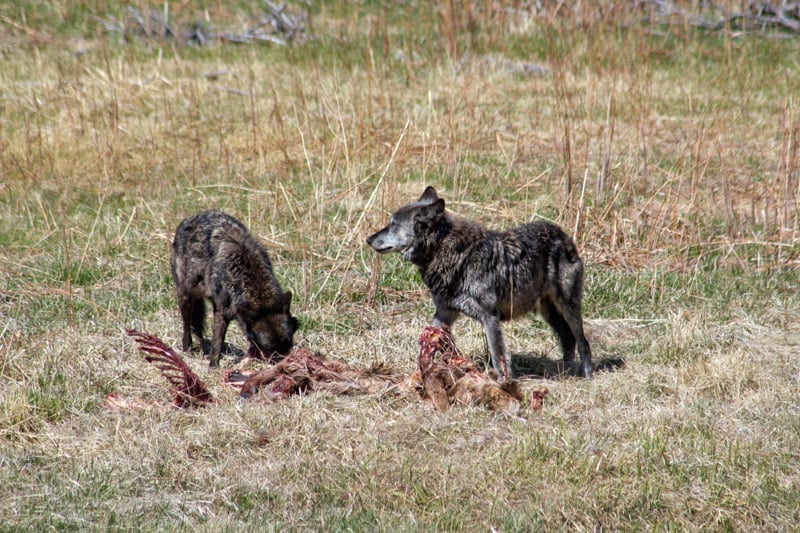
Q: Are you close when you see them?
A: Not really. When we watch them, the average distance would be a half-mile to a mile. That’s why it’s necessary to have binoculars or a spotting scope. If you sign up for a wildlife tour, the guides will provide that.
But there are occasions when one or more wolves may want to cross the road. As a park service employee I would be one of those guys at the scene to stop traffic for the wolves — like a crossing guard at an elementary school.
Q: I imagine most visitors get pretty excited when they see wolves in front of them.
A: Sure. And some people get overexcited. Maybe it’s the first wolf they’ve seen and that’s been their life’s dream and they want a good picture.
But sometimes, unintentionally, people aren’t really thinking through what’s happening. They jump out and take pictures and park where wolves want to cross and that stymies the wolf. It’s like a human parent who’d taught their kids to be wary of strangers, and the kids are trying to cross the road when a stranger shows up. That scares the kids who try to circle around the car, and that’s what the wolves try to do. If I’m there I’ll suggest that we — it’s always “we” — move to a better spot where we can see and photograph them.
The bottom line is that this park is here for wildlife as well as visitors, and we try to strike a balance where they can see wildlife in a way that’s respectful of the animals.
Q: How will a visitor know where the wolves are?
A: The rangers can tell them where they’ve been spotted recently, or they may see me out in the park. I get out early and since most of the wolf packs include at least one wolf with a radio collar, I use telemetry equipment to find them. When people come along and see me looking at something with a spotting scope, it’s a totally normal thing for them to ask what’s going on. Since there’s a lot of misunderstanding of wolves and I feel it’s very important to talk to guests and answer their questions, I’ll invite them to look through the scope and tell them the life stories of some of the animals they are seeing.
Just speaking with one person at a time can create more sympathy, acceptance, and understanding of wolves.
Q: What are some tips to follow if you want to photograph a wolf?
A: Again, I would emphasize the average distance a person would be from a wolf or a pack will be a half-mile to a mile — which is pretty far — so it’s important for people to have realistic expectations.
The wolves they see in books and calendars and magazine covers are primarily wolves in captivity, so if their life’s dream is to get a picture of a wolf like that, it’s not going to happen. So I would encourage people to think in the long run what is most important. Instead of fumbling with a tripod and camera and fishing for an extra lens while wolves are playing and running around, what is the more important thing? It’s being in the moment; enjoying the experience of sharing Yellowstone with wolves in sight. That’s a peak life experience.
Q: And if you don’t see them?
A: You may hear them. Wolves can howl anytime. For them, it’s partly communication — the equivalent of a human family hiking when they can’t quite see everyone. The dad calls out and one kid would say he’s by the creek, the other by the playground. Sometimes their howl can express emotion. During mating season, when a male howls, it’s a love song. He’s looking for someone.
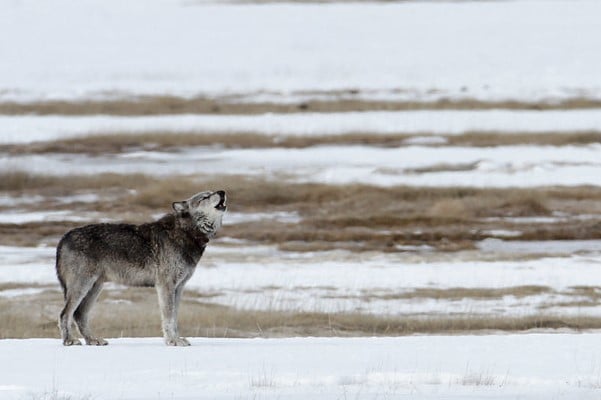
Q: I’ve heard wolves howl before and it’s an unforgettable, supernatural sound.
A: Even if they saw them later, sometimes people will tell me it was more emotional and meaningful for them to hear a wolf than to see a wolf.
It’s partly the mystery of it and partly because whether the person is conscious of it or not, if you hear the howling when they’re out of sight, on some level, there is communication between you and that wolf.
You are taking a step into their world, their mystical world. For a few moments, as you hear that howling, you are hearing one wolf communicate with another, and you become part of that experience.
Q: These wolves sound like family to you.
A: Oftentimes, I’ll ask people, “Who is the true leader of the wolf pack?” Well, they’ll say the alpha male because he’s the biggest, toughest male. That would [seem] to be the correct answer. But it’s not.
No, it’s the alpha female who’s always in charge. If the alpha male doesn’t do what he’s told, he gets bit on the rear end and he can’t do anything about it. The females run the show. Maybe some guys can relate to that.
Q: What is it about wolves that you like?
A: There’s so much. The first thing that comes to mind is that, like people and dogs, each wolf has its own personality. So siblings in a litter that have the same parents and similar genetics can have different personalities, like two kids in a human family. Over the years, I’ve seen so many personality types.
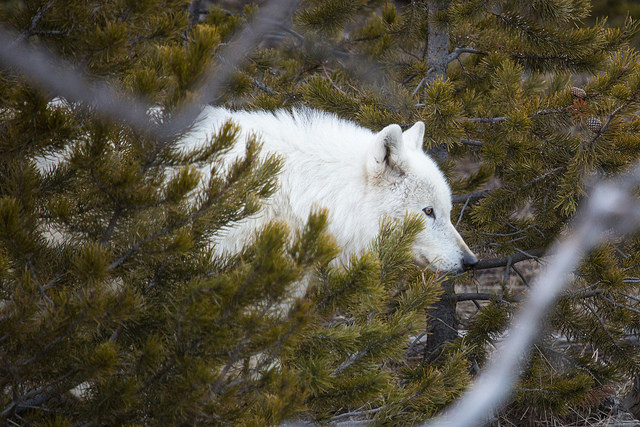
Q: Is there a standout wolf for you?
A: The wolf I talk about most is Wolf 21. By any standard, he was by far the toughest guy around, undefeated in battles, and never lost a fight. I saw him on two occasions protect his family by fighting six wolves by himself — and even then, he won. He was the Bruce Lee of wolves, the Ali of wolves. He had been raised by his adoptive father, who taught him something: 21 witnessed his adoptive father defeat a much larger and stronger alpha male, and then 21’s father let the guy go. The father certainly had the option to kill his opponent but didn’t. He defeated him, beat him up, and let him go.
21 followed that example for the rest of his life. He would use the minimum amount of force to protect himself and his family or to prove a point, and when the other guy was defeated or in a helpless position, he would step away, and the other guy would step away with a tucked tail.
I knew 21 better than any animal, and my impression was that he was never really impressed with himself or that he was the undefeated heavyweight champion. To him, it was something he could do. He had no problem with his mate, 42, being the alpha female and the true leader of the pack.
A story I love to say is that as tough as he was, there was one time when all the members of the pack were sleeping. He got them up by howling because he wanted to go hunting to the east. After getting everyone excited, after a couple of hundred yards, he turned around, and no one had followed him. He goes back and goes to sleep again — and then gets them up and excited again and he goes east. Everyone ignores him the second time. He shrugs his shoulders, and when the third nap session was over, 42 woke up and started howling, got everyone excited, and headed west, and everyone followed her… with 21 being the last in line.
Sometimes in life, this is maybe a guy thing; you see a professional athlete, a big, strong guy who can take care of himself, and you’re impressed by that. But once you get to know him, you’re more impressed that he truly has a gentle personality, that if he had to do something to deal with [an adversary], he would do the bare minimum and then let the guy off. That’s what 21 was like.
It’s a lesson even an 8- or 10-year-old can understand. They don’t have to be a bully or a tough guy. If I’m speaking to high school- or college-age kids, I’ll tell them about 21. After going over how he was a big tough guy and invincible, I would go on to say he was very respectful of females.
During mating season, if he was rejected by a female, he was totally OK with that. Once I saw him when he was interested in a female and trying to demonstrate interest, and for whatever reason she had no intent to have anything to do with him. She was a little annoyed — and she was tiny compared to him — but she ran over and bit him in the nose. His only response was to wag his tail. In the end, he understood that “no” means “no.” And he walked away.
21 lived almost twice as long as other wolves. The average lifespan is only five years, and most die fighting to protect their family from rival wolves. He was 9 years old, and as far as we could tell, he may have been the only wolf we’ve had who died of old age.
Specializing in American travel, Gary McKechnie is the author of National Geographic’s USA 101, Ten Best of Everything: National Parks, and Great American Motorcycle Tours. He lectures on American travel and history aboard the ships of the Cunard, Seabourn, and Silversea lines.
For more travel experiences to Beautiful Places on Earth™ available from Xanterra Travel Collection® and its affiliated properties, visit xanterra.com/explore.
Want to experience Yellowstone in-depth? See what makes Yellowstone National Park a great place to work for a season or longer!
NPS Photos and Audio
Dive Into the World of Yellowstone's Wolves
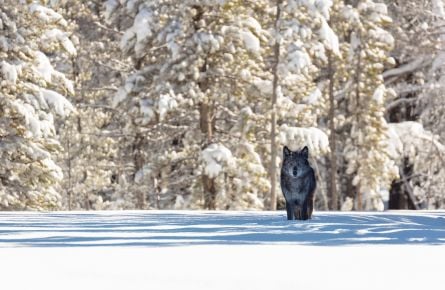
Winter Wolf Discovery Package
Join a Yellowstone Forever Institute naturalist guide for an experience into the beautiful landscape of Lamar Valley, where Yellowstone’s wolves are often spotted.
Read More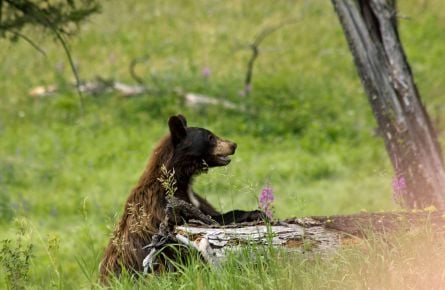
Spring Wolf And Bear Discovery Package
You’ll join a Yellowstone Forever Institute naturalist guide for sunrise trips in Yellowstone’s Northern Range to look for these charismatic carnivores.
Read More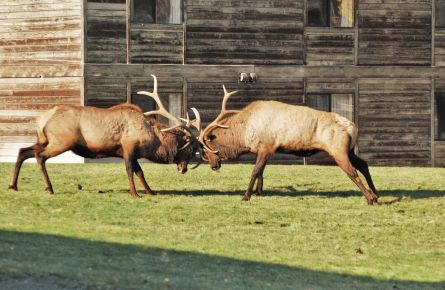
Fall Elk And Wolf Discovery Package
Team up with a Yellowstone Forever Institute naturalist guide to discover wolves and elk, Yellowstone’s marquee predator and prey species.
Read MoreExplore More Wildlife Stories
- Explore More Wildlife Stories